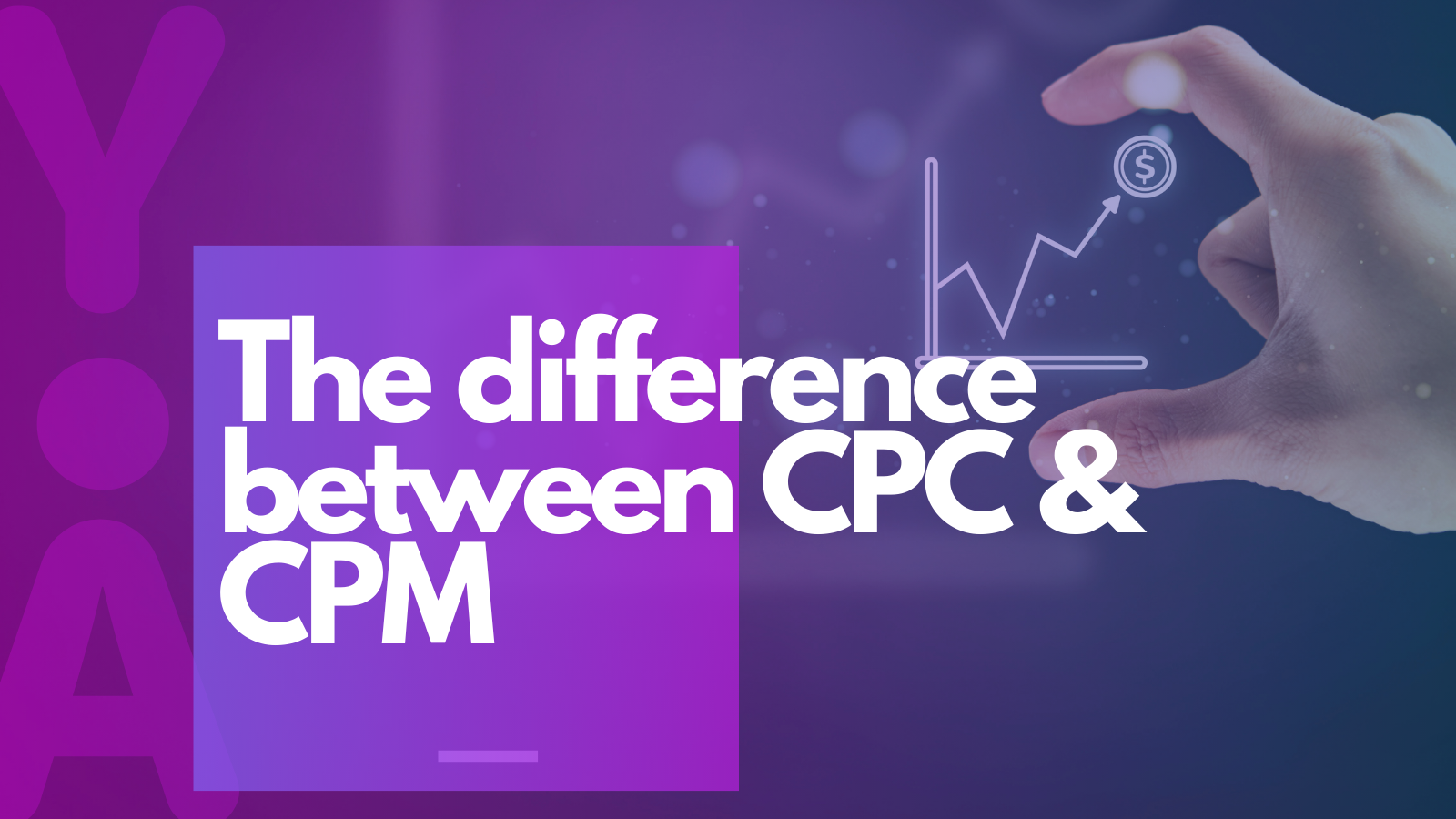In the alphabet soup of app marketing, CPM and CPC are some of the first acronyms you learn. CPM (cost-per-mille) and CPC (cost-per-click) are pricing models that help mobile marketers optimize campaign performance to align with their goals. Of all the payment models (CPI, CPA, etc.), CPM and CPC campaigns are, perhaps, the most valuable. This is especially true when it comes to evaluating the top-of-the-funnel marketing metrics of a campaign. These are often the payment models used at the start of an app marketing campaign; after which campaigns are optimized towards more specific, down-funnel goals like purchases or subscription sign-ups.
CPM
CPM stands for “cost-per-mille” or “cost-per-thousand.” The reason why this description is marked by “CPM” (and not “CPT”) is because it uses the Latin Roman numeral abbreviation for thousand which is ‘M’.
So, CPM stands for cost-per-thousand-impressions. This payment model sets up a campaign to charge marketers every one thousand times their ad loads on a mobile web page or in an app (which constitutes an impression).
Traditionally, a CPM payment model is used to measure brand campaigns. That is to say: not performance-based campaigns where conversions are involved. Marketers also often use this model to “back out” a CPC (cost-per-click) or CPA (cost-per-action) campaign to an estimated CPM.
While a CPM is a simple way to buy mobile ad space, it comes under scrutiny for charging advertisers for impressions regardless of whether a consumer actually sees them. The same criticism happens on ads on the web: an advertiser will be charged for an ad that appears below a user’s browser window that they never actually saw because they never scrolled down. The same can happen on the mobile web and in apps.
How to Calculate Your Campaign CPM
It’s simple to calculate your campaigns’ CPM. Simply calculate the total cost of your ad campaign and divide that number by the overall impressions generated by the campaign. Multiply this result by 1000 and you should get a dollar amount.
In the programmatic ecosystem, advertisers and DSPs (demand side platforms) bid in real-time for ad inventory, which entails bidding on individual impressions. Since each campaign has different parameters, each bid will likely result in a different payout. So, if an advertiser bids an average of $0.0005 per impression to show an interstitial ad, it would achieve a $0.50 CPM for the campaign.
A note about eCPMs
You might have heard the term ‘eCPM’ which stands for effective cost per mille. This metric is used to measure the effectiveness or profitability of the ad inventory a publisher is selling. An eCPM tells you how ad inventory would perform if it was purchased on a CPM basis. This information can be used to compare revenue across channels that may have widely varying traffic. ECPMs also help advertisers predict what future earnings may look like.
CPC
CPC stands for cost-per-click and is an even simpler model to understand than CPM (also, because there’s no Latin involved). With a CPC payment model, an advertiser pays each time a click is made on their ad. To some, this translates as signaling higher intent than campaigns structured around a CPM model. The thought here is that you’re paying only to get the attention of users who are engaged enough with your ad and its messaging to click on it for more information.
How to Calculate Your Campaign CPC
While a flat cost-per-click that’s paid up front exists, in the programmatic ad buying space, pricing tends to be more complicated. In the real-time-bidding ecosystem, advertisers select bids and compete in an auction for ad inventory. The advertiser whose ad wins the bid — thereby winning the associated ‘click’ — pays one cent higher than the second place bid. This is called a ‘second price auction’ and is the most common bidding model in programmatic advertising. After the advertiser’s bid has won and their ad is shown, the cost-per-click is calculated by dividing total campaign spend by total number of clicks.
CPM and CPC: Which is Better?
Deciding between these two payment models for your campaigns depends on your goals. If you’re looking to build brand awareness, you might go with a CPM campaign. Why? Because a CPM campaign will focus on putting your ads on as many screens as possible. This can also help you better get to know your audience by casting a wide net, so to speak. Then, once your brand’s visibility reaches a certain point, you can transition to an action-based campaign.
If you know your audience and are looking to target your ad spend more, then try a CPC campaign. Since CPC campaigns measure an action (in this case, a click) rather than an impression (which is not always guaranteed), you get a clearer idea of how many users are willing to learn more about your app.
In the end, the type of campaign you select should depend on your goals and where you are in the scaling of your campaigns.
Takeaways
CPM and CPC campaigns are the most valuable payment models when it comes to evaluating the top-of-the-funnel marketing metrics of a campaign. The decision on which model is best for you depends on your goals and campaign timeline.
- CPM: Stands for “cost-per-mile” or “cost-per-thousand.” This model charges an advertiser for every one thousand impressions on their ads. In general, this model is used to increase brand awareness.
- CPC: Stands for “cost-per-click”. This model charges advertisers a fee every time a user taps on their ad. In general, this model is used to target ad spend more than CPM. This is because it shows when a user has high enough intent to tap on an ad.
Need Help Choosing Between a CPM or CPC Campaign?
Our team is ready to assist you in selecting the best payment model for your app marketing campaigns! Reach out to us to launch your CPM and CPC campaigns and for help evaluating which type of model is best for your app.

